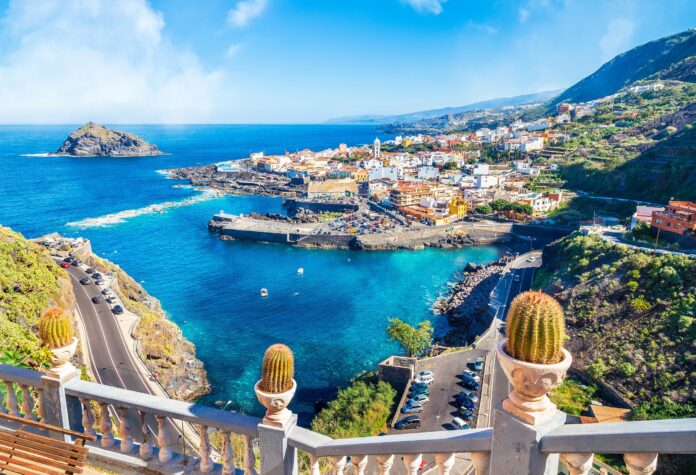
The Canary Islands, located off the northwest coast of Africa, is a paradise waiting to be discovered. Each of the eight main islands boasts its unique charm, landscapes, and experiences, making it a haven for every type of traveler. Whether you’re an adventure junkie seeking thrill in the wild terrains, a culture vulture eager to delve into the islands’ rich history, or a leisure traveler looking for tranquil escapes, the Canary Islands cater to all. This guide will take you on a virtual tour through the best Canary Islands to visit, offering you a glimpse into their highlights and must-visit spots.
1. Tenerife
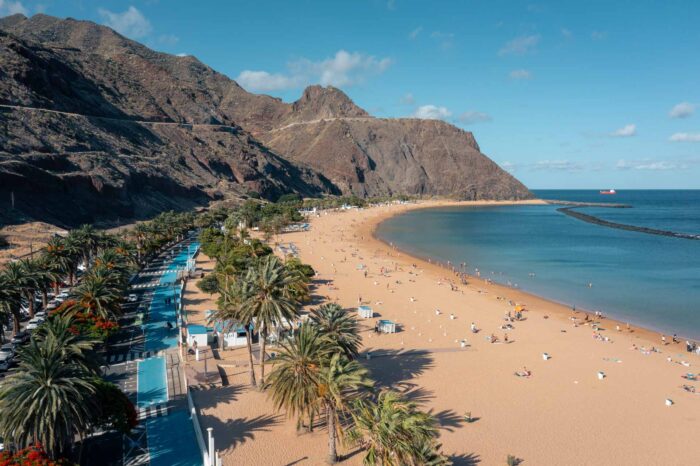
Tenerife, the largest of the Canary Islands, boasts a rich tapestry of experiences. Its diverse landscapes encompass sun-soaked beaches, lush forests, and Spain’s highest peak, the snow-capped Mount Teide. This island’s beauty extends underwater, with vibrant marine life attracting snorkelers and divers.
Besides nature’s bounty, Tenerife hosts the lively Carnival of Santa Cruz, an explosion of music, dance, and color, second only to Rio de Janeiro’s carnival. For history and architecture lovers, the UNESCO World Heritage site of La Laguna offers well-preserved colonial buildings and charming streets.
The island’s culinary scene is equally enticing, with restaurants serving everything from traditional Canarian cuisine to international flavors. Whether you’re an adventure enthusiast, history buff, nature lover, or foodie, Tenerife has something to offer you.
Tenerife offers a range of accommodation options to suit different preferences, including all-inclusive hotels. These hotels provide a convenient and hassle-free experience for travelers, ensuring that everything from meals to activities is included in the package. Tenerife all-inclusive hotels provide an excellent choice for those seeking a relaxing and indulgent vacation.
2. Gran Canaria
Gran Canaria, often called a “miniature continent,” offers an incredible variety of landscapes within a relatively small area. From the golden sand dunes of Maspalomas in the south to the rugged mountains and lush pine forests in the interior, Gran Canaria is a feast for the senses.
The island’s capital, Las Palmas, is a vibrant city with a blend of modernity and history, offering lively nightlife, excellent restaurants, and the historic district of Vegueta. Gran Canaria also offers plenty of outdoor activities, from hiking in the Tamadaba Natural Park to surfing in Playa del Ingles. If relaxation is your goal, the serene beaches of Puerto de Mogan offer the perfect escape.
3. Lanzarote
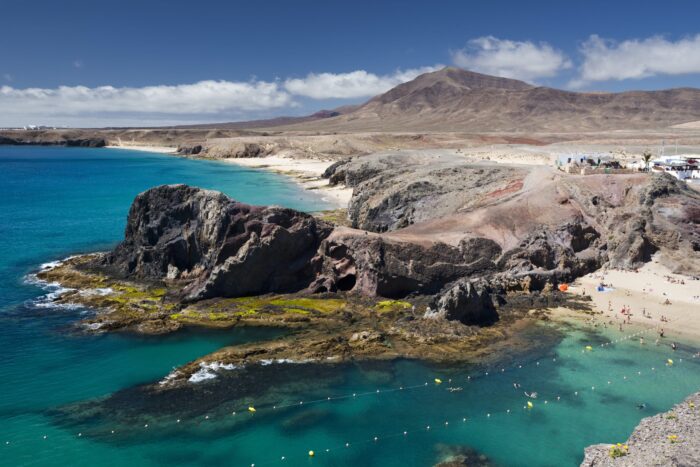
Lanzarote’s lunar landscapes, born from ancient volcanic eruptions, offer a unique beauty that’s hard to match. The island’s dramatic terrain is best showcased in the Timanfaya National Park, a surreal expanse of lava fields and dormant volcanoes. But Lanzarote is not just about the rugged landscapes. It also boasts some of the best beaches in the Canary Islands, with the golden sands of Playa Blanca and the black sand beach of Playa Quemada.
The island’s commitment to sustainable tourism is evident in the works of local artist César Manrique, whose influence can be seen in the island’s architecture and attractions, including the beautiful Jameos del Agua and the Cactus Garden. Lanzarote’s wine region, La Geria, is another highlight, producing excellent wines from vineyards grown in volcanic ash.
4. Fuerteventura
Known for its expansive golden beaches and turquoise waters, Fuerteventura is a sun-lovers dream. The island is also a hot spot for water sports, particularly wind-surfing and kite-surfing, thanks to its constant winds and excellent surf conditions. Jandia in the south offers some of the best beaches, while the Corralejo Natural Park in the north features stunning sand dunes.
For those seeking tranquillity, the small fishing villages, like El Cotillo, offer a peaceful retreat. Fuerteventura’s interior, with its volcanic landscapes and traditional Canarian villages, is worth exploring too. Don’t miss a visit to Betancuria, the island’s old capital, known for its charming white houses and the Santa Maria church.
5. La Palma
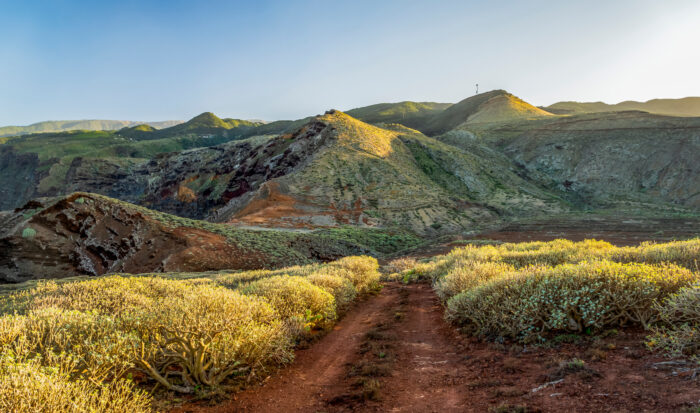
La Palma, often referred to as ‘La Isla Bonita’ (the Beautiful Island), lives up to its name with its verdant forests, deep gorges, and serene beaches. A UNESCO Biosphere Reserve, it’s a hiker’s paradise, with trails weaving through the lush Laurel forests and the dramatic Caldera de Taburiente National Park. The island’s night skies, protected by law, make for some of the world’s best stargazing.
La Palma’s small size doesn’t prevent it from boasting a rich culture, evident in its vibrant festivals, traditional architecture, and the archaeological site of Benahoaritas. The island’s capital, Santa Cruz de La Palma, enchants with its cobbled streets, colonial architecture, and bustling markets.
6. La Gomera
La Gomera, the second smallest of the Canary Islands, offers a tranquil escape from the hustle and bustle. It’s home to the Garajonay National Park, a UNESCO World Heritage Site, known for its unique laurel forests and excellent hiking trails. The island’s cliffs and ravines lead down to picturesque beaches and fishing villages, like Playa de Santiago and Valle Gran Rey.
La Gomera’s rich culture is exemplified in the Silbo Gomero, a unique whistling language used by locals to communicate across the island’s deep ravines. Don’t miss out on tasting the local delicacy, ‘almogrote’, a delicious cheese paste, and the island’s homegrown wines.
7. El Hierro
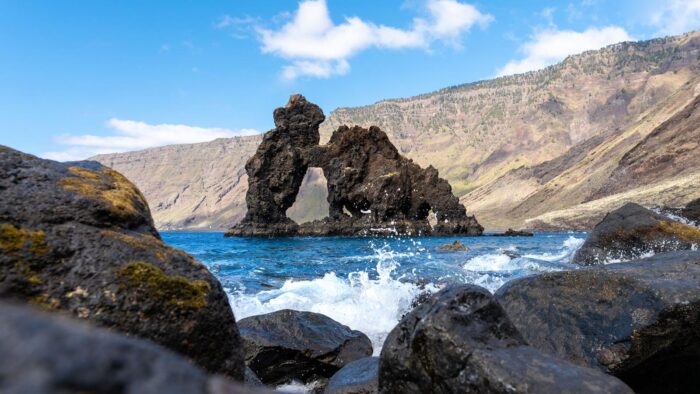
El Hierro, the smallest and most remote of the Canary Islands, is a place where time seems to stand still. Its rugged beauty, rural landscapes, and laid-back lifestyle make it an ideal destination for those seeking solitude and nature.
The island is a UNESCO Biosphere Reserve, with stunning hiking trails, pine forests, lava fields, and dramatic cliffs. El Hierro’s coast offers excellent diving spots, known for their clear waters and abundant marine life. The island’s commitment to renewable energy and sustainable practices makes it a model for sustainable tourism.
8. La Graciosa
La Graciosa, the newest addition to the Canary Islands, is a hidden gem worth discovering. With no paved roads and only a few hundred inhabitants, it’s the perfect place to disconnect from the world. The island’s pristine sandy beaches, turquoise waters, and desert-like landscapes offer a sense of tranquillity that’s hard to find.
Whether it’s exploring the island on a bike, hiking the El Agujero mountain for panoramic views, or simply lounging on the serene beaches of Playa de Las Conchas or Playa La Cocina, La Graciosa promises a unique experience.
Conclusion
From the vibrant diversity of Tenerife to the tranquil beauty of La Graciosa, each of the Canary Islands offers its unique allure. Whether you’re a nature lover, adventure enthusiast, culture buff, or someone seeking relaxation, these islands promise unforgettable experiences. The best part? The Canary Islands’ pleasant climate, with warm temperatures and sunshine year-round, makes it a perfect destination anytime. So, pack your bags and get ready to discover the myriad charms of the Canary Islands. You’re sure to return with a suitcase full of memories and a heart full of joy.
















